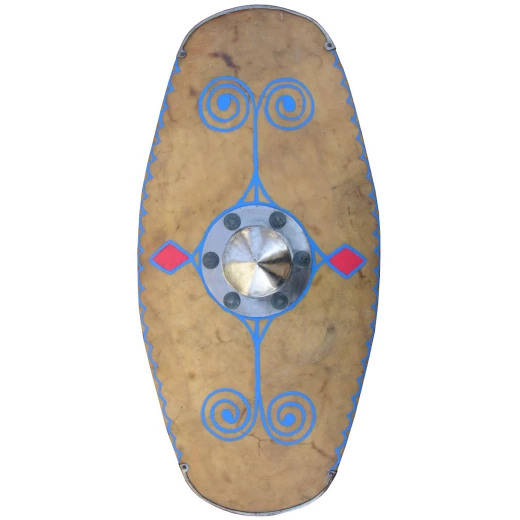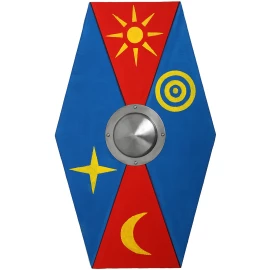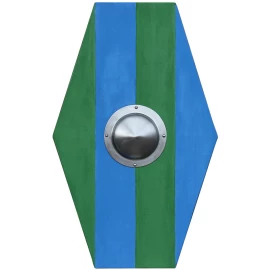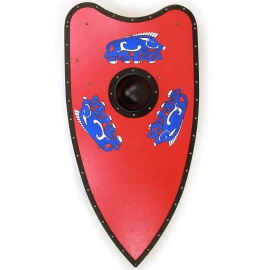Celtic shield Cahal - Sale
1xRecommended offer
Celtic shield Cahal
Parameters of the Celtic shield:
- Used materials: wood with raw leather overstuff
- Size approx. 110 x 53cm
- Thickness of the wood board is approx. 13mm
Origin of the original: 3rd - 2nd cen B.C.
Celts is a modern term used to describe any of the European peoples who spoke, or speak, a Celtic language. The term is also used in a wider sense to describe the modern descendants of those peoples, notably those who participate in a Celtic culture.
The historical Celts were a diverse group of tribal societies in Iron Age Europe. Proto-Celtic culture formed in the Early Iron Age (1200 BC-400 AD) in Central Europe (Hallstatt period, named for the site in present-day Austria). By the later Iron Age (La Tène period), Celts had expanded over a wide range of lands: as far west as Ireland and the Iberian Peninsula, as far east as Galatia (central Anatolia), and as far north as Scotland.
The earliest direct attestation of a Celtic language are the Lepontic inscriptions, beginning from the 6th century BC. Continental Celtic languages are attested only in inscriptions and place-names. Insular Celtic is attested from about the fourth century AD in ogham inscriptions. Literary tradition begins with Old Irish from about the eighth century. Coherent texts of Early Irish literature, such as the Táin Bó Cúailnge (The Cattle Raid of Cooley), survive in 12th century recensions.
By the early first millennium AD, following the expansion of the Roman Empire and the Great Migrations (Migration Period) of Germanic peoples, Celtic culture had become restricted to the British Isles (Insular Celtic), and the Continental Celtic languages ceased to be widely used by the sixth century. "Celtic Europe" today refers to the lands surrounding the Irish Sea, as well as Cornwall and Brittany on either side of the English Channel. Galicia (NW Spain), Northern and Central Portugal (together with Galicia, part of ancient Gallacea) and Asturias (Northern Spain) are also clearly seen as Celtic lands, but without a surviving Celtic language. Source: Wikipedia
Write to our specialist











.2152382459.1707678884.JPG.webp)